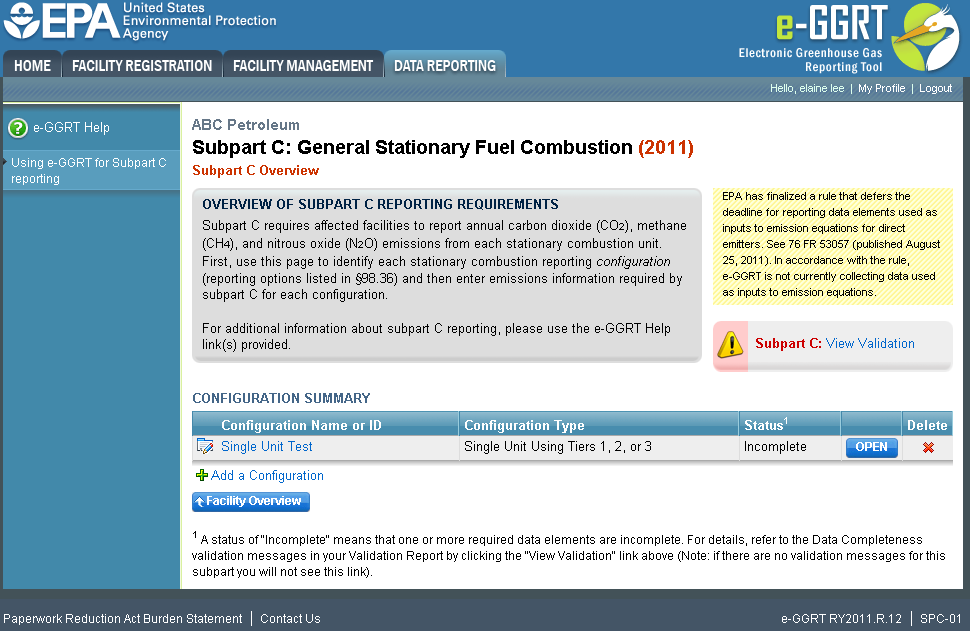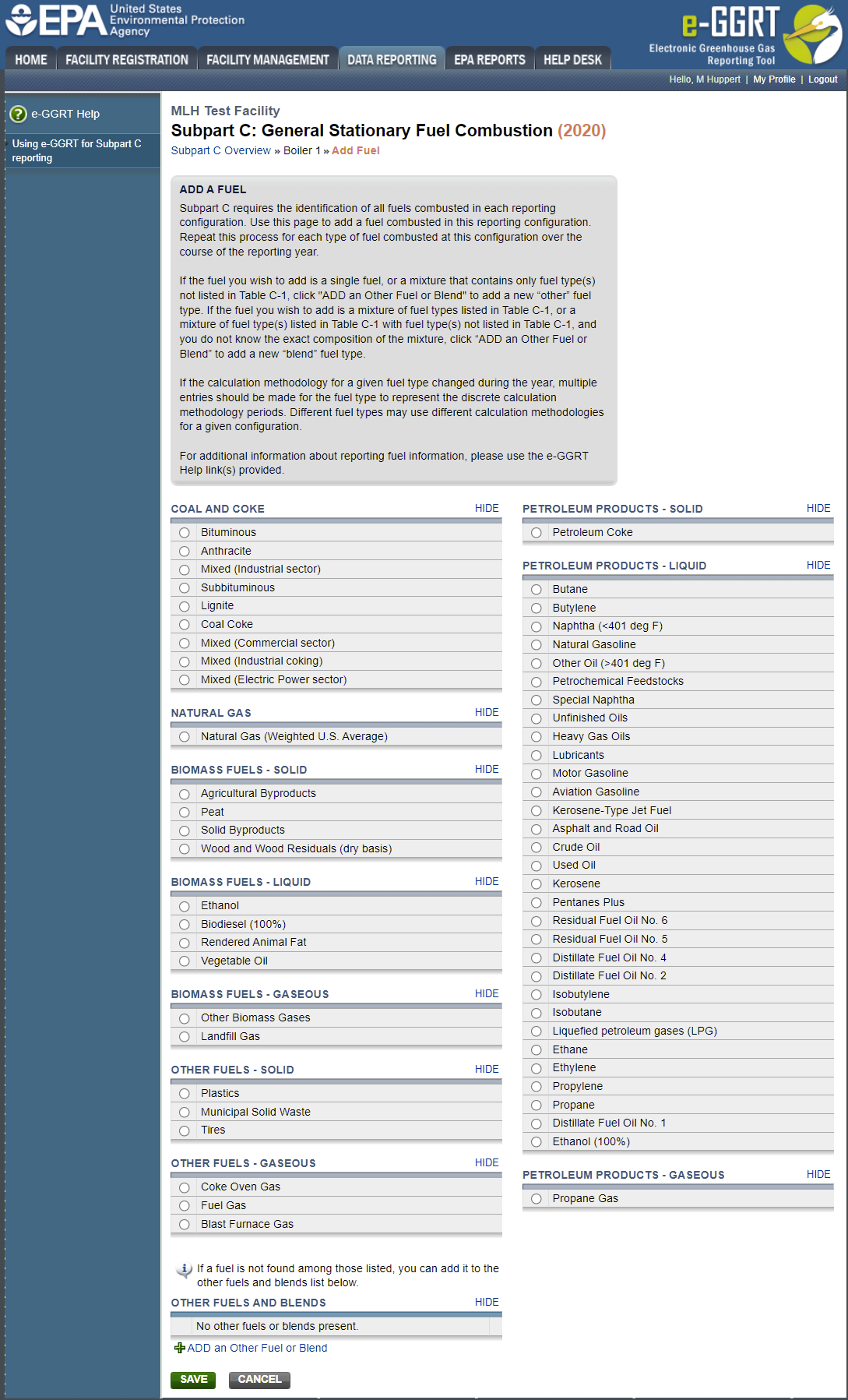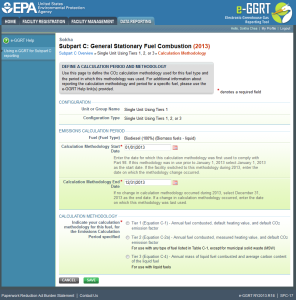The text below describes how to enter subpart C Stationary Fuel Combustion Sources fuel identification information for each configuration type. The process to edit fuel information for an existing configuration type is essentially similar.
Click this link to expand
Starting on the Subpart C Overview page, find the configuration type for which you would like to enter emissions information in the CONFIGURATION-LEVEL SUMMARY table and click on the OPEN button.
Click this link to expand
To add a fuel type for this configuration, click the “ADD a Fuel” link below the FUEL EMISSIONS INFORMATION table.
Click this link to expand
For configurations of all types, subpart C requires you to identify the following for each configuration:
- The fuel types combusted during the reporting year [98.36(b)(4), 98.36(c)(1)(v), 98.36(c)(2)(iv), 98.36(c)(3)(iv), 98.36(d)(2)(ii)(A), and 98.36(d)(2)(iii)(A)]
If a configuration type is selected that uses Tiers 1, 2, or 3, you will be required to specify which equation is used to calculate CO2 emissions. By identifying which equation is used to calculate emissions, e-GGRT is able to determine which data reporting elements are required for each fuel type. The reporter should refer to 98.33(b) to determine which Tier is required for each fuel type at the configuration.
For Configurations of Type 1 (single unit using Tiers 1, 2, or 3), Type 3 (aggregation of units), and Type 4 (common pipe), subpart C requires you to identify the methods used to calculate emissions for each fuel type. Include the following information for each fuel type combusted in the unit:
- Calculation methodology start date and end date, for each fuel type [98.36(b)(6)(ix), 98.36(c)(3)(viii) - (ix)]
- Calculation methodology used for the emissions calculation period specified, for each fuel type [98.36(b)(5), 98.36(c)(1)(vii), 98.36(c)(3)(v)]:
- Tier 1/Equation C-1: Annual fuel combusted, default heating value, and default CO2 emission factor
- Tier 1/Equation C-1a: Annual natural gas usage from billing records (therms) and default CO2 emission factor
- Tier 1/Equation C-1b: Annual natural gas usage from billing records (mmBtu) and default CO2 emission factor
- Tier 2/Equation C-2a: Annual fuel combusted, measured heating value, and default CO2 emission factor
- Tier 2/Equation C-2c: Steam generation, ratio of maximum rated heat input capacity to design rated steam output capacity, and default CO2 emission factor (for MSW and solid fuels listed in Table C-1)
- Tier 3/Equation C-3: Annual mass of solid fuel combusted and average carbon content of the solid fuel
- Tier 3/Equation C-4: Annual mass of liquid fuel combusted and average carbon content of the liquid fuel
- Tier 3/Equation C-5: Annual volume of gaseous fuel combusted, average carbon content of the gaseous fuel, and average molecular weight of the gaseous fuel
Use the radio buttons to select a fuel type for this unit or group.
When finished, click SAVE.
To add a fuel type that is not listed, click “ADD an Other Fuel or Blend.”
Click this link to expand
Use the text box and drop-down menu to enter the fuel name and fuel type.
When finished, click SAVE.
Click this link to expand
Use the text boxes and radio buttons to enter the required information.
When finished, click SAVE.
See Also
Screen Errors
Using e-GGRT to Prepare Your Subpart C Report for RY2014 and Later
Subpart C Configurations for RY2014 and Later
Subpart C Configuration-Level Emissions Information for RY2014 and Later
Subpart C Fuel Identification Information for All Reporting Years
Subpart C Fuel-Level Emissions Information for RY2014 and Later
Configuration types, emission details and their presentation in the summary report
Using Subpart C Calculation Spreadsheets
Subpart Validation Report







